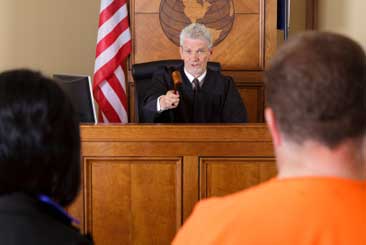|
|
| MT DOC: Restorative Justice in the Spotlight |
| By Sally K. Hilander, MT DOC: Victim programs manager |
| Published: 06/04/2012 |
 The Law and Justice Interim
Committee, which deals with the
Department of Corrections and other
criminal justice agencies, has intensively
studied victim impact panels,
victim-offender dialogues, and similar
programs in recent months to
gauge their potential to reduce recidivism
and prevent future victims.
The Law and Justice Interim
Committee, which deals with the
Department of Corrections and other
criminal justice agencies, has intensively
studied victim impact panels,
victim-offender dialogues, and similar
programs in recent months to
gauge their potential to reduce recidivism
and prevent future victims.
Various panels composed of representatives from local organizations promoting restorative justice efforts and restorative justice volunteers from around Montana shared with the lawmakers how offender attitudes change after they meet face-to-face with victims to hear how crimes disrupt entire communities. Victims also came forward to tell the committee how speaking on victim impact panels gives them hope that they can help reform at least one offender. Victim impact panels and other programs that allow facilitated contact between victims and offenders are part of “restorative justice,” a criminal justice model that downplays retribution and focuses on rehabilitation and healing for everyone harmed by crime, offenders and their families included. Victim restitution is another important component of the model. Department of Corrections officials testified before the legislative committee last fall about lives changed for the better through victim-offender dialogues in cases of deliberate homicide, aggravated assault, incest, negligent (drunk driving) homicide, and assault on children. Agency representatives also reported on the department’s accountability letter pro-gram, which gives adult offenders an opportunity to apologize if their victims want to hear it. The program for adult offenders that captured the most attention, however, reaches the most offenders – victim impact panels. Such panels, or VIPs, debuted in the Montana corrections system about 1997 when the Great Falls Prerelease Center and Treasure State Correctional Training Center (boot camp) both introduced victim impact panels as part of offender programming. VIPs are composed of victims from the community who volunteer to speak to a group of offenders about the effects of crimes ranging from burglaries and theft to sexual assaults and homicides. The Helena Prerelease Center introduced a VIP in 2009, followed by Montana Women’s Prison in February of this year. The Elkhorn Treatment Center in Boulder hosted its first VIP on April 9. Mark Umbreit, founder of the Center for Restorative Justice and Peacemaking at the University of Minnesota, believes Montana is on the right track. Umbreit visited Helena in February and told the Law and Justice Commit-tee that restorative justice is “common sense” and may be more successful – and much less expensive – than traditional criminal justice programs. “If you kept five or 10 guys out of prison for 60 to 90 days, it would easily pay for a restorative justice program,” he said. Umbreit also con-ducted victim-offender dialogue facilitator training for 20 volunteers and program staff with the Lewis and Clark County juvenile probation department, which funded his trip with a federal grant, and DOC, which hosted the training at central office. Restorative justice has roots in ancient Chinese, Canadian and American Indian cultures, but can be a hard-sell in modern criminal justice systems that tend to focus on retribution. Umbreit is optimistic, however, that Montana lawmakers found his arguments credible and will not be tempted to dismiss restorative justice as a liberal concept. “Restorative justice gives moral authority back to victims, families and communities instead of to the state,” he said. “It is like going back to the future. How is that a liberal idea? It’s common sense. It’s fiscally responsible.” Interim studies at the Montana Legislature sometimes result in proposed statutory changes and funding. Legislative response to restorative justice will occur when law-makers convene for the next session in January. Reprinted with permission: Montana DOC - Correctional Signpost 2012 No. 2 |
Comments:
Login to let us know what you think
MARKETPLACE search vendors | advanced search

IN CASE YOU MISSED IT
|


Restorative justice came from the Judeo-Christian faith. It goes all the back to the ancient landmarks of the Bible. One man failed to correct his wife, and trouble was passed down to each generation. The tree in the Garden represented the spirit of the one that was put on a tree. It is the tree of life. Many today believe in rehabilitation, but do not believe in restorative justice which requires regeneration of spirit.